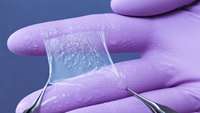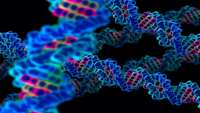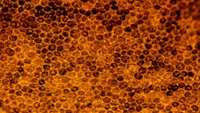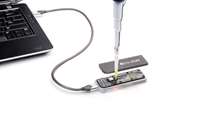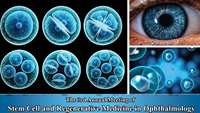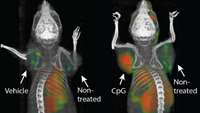WFIRM wound healing technology licensed to XCell Biologix
A potential new cell-free treatment for severe burns and chronic wounds that was developed by scientists at Wake Forest Institute for Regenerative Medicine (WFIRM) has been exclusively licensed to XCell Biologix, a private company that aims to make the therapy available to patients worldwide.
Genome architecture’s surprising role in cell fate decisions
Scientists have long been reading the code of life – the genome –, as a sequence of letters but now researchers have also started exploring its three-dimensional organisation. In a paper published in Nature Genetics, an interdisciplinary research team of scientists from the Centre for Genomic Regulation (CRG) – including a Centro Nacional de Análisis Genómico (CNAG-CRG) group – in Barcelona, Spain, shows that the three-dimensional organisation of the genome plays a key role in gene expression and consequently in determining cell fate.
Discovery brings stem cell therapy for eye disease closer to the clinic
Scientists at the National Eye Institute (NEI), part of the National Institutes of Health, report that tiny tube-like protrusions called primary cilia on cells of the retinal pigment epithelium (RPE)—a layer of cells in the back of the eye—are essential for the survival of the retinas light-sensing photoreceptors.
Iran is not among the countries with highest emigration ranks
According to the public relations and information center of the Vice-Presidency for science and technology affairs, Sorena Sattari, the vice president for science and technology affairs and president of the national elites foundation, regarded culture building for presence of the private sector in the area of knowledge-based economy as important missions of these foundations in the 28th national meeting of heads of provincial elites foundations.
Bioinformatics analysis to screen key genes implicated in the differentiation of induced pluripotent stem cells to hepatocytes.
Due to the lack of potential organs, hepatocellular transplantation has been considered for treating end-stage liver disease. Induced pluripotent stem cells (iPSCs) are reverted from somatic cells and are able to differentiate into hepatocytes.
USB stick can sequence DNA in seconds
It may look like an ordinary USB memory stick, but a little gadget that can sequence DNA while plugged into your laptop could have far-reaching effects on medicine and genetic research.
CRISPR gene editing may have just become a whole lot more accurate
CRISPR gene editing is an enormously exciting area for molecular biologists, opening up new opportunities when it comes to editing DNA to fight back against a wide range of medical conditions. Heck, it’s so versatile that it can even be used to encode a GIF into the DNA of a virus, demonstrating how it is possible to capture complex information in living bacteria.
The first stage of the third student Olympiad of stem cells and regenerative medicine
The first stage of the third student Olympiad of stem cells and regenerative medicine was held by the efforts of council for stem cells sciences and technologies.
The Third Symposium of Stem Cells and Regenerative Medicine in Ophthalmology Will Be Held
The third symposium of stem cells and regenerative medicine in ophthalmology and the first workshop for introduction of iPSC technology in ophthalmology will be held with the cooperation of the council for stem cells sciences and technologies.
Cancer ‘vaccine’ eliminates tumors in mice
Cancer ‘vaccine’ eliminates tumors in mice


